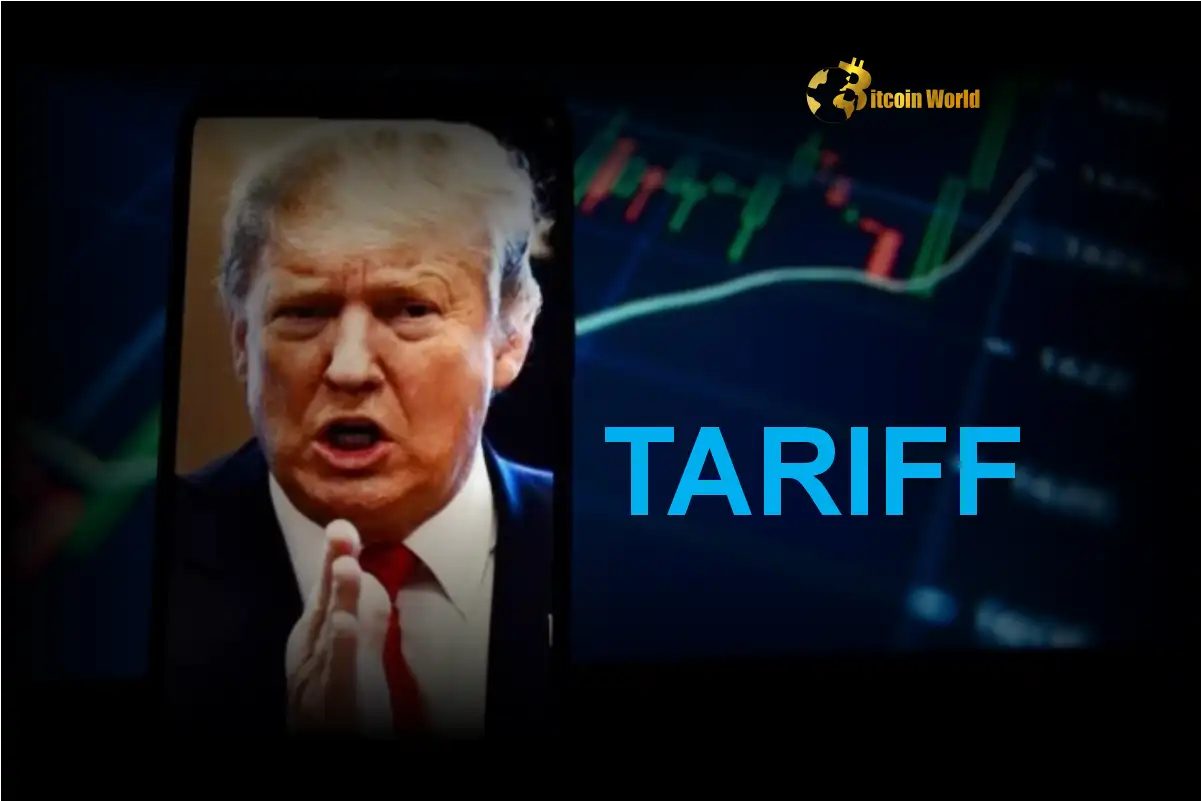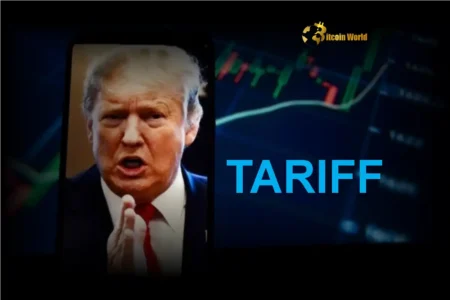
Are you invested in Bitcoin or closely following the cryptocurrency market? A recent expert analysis suggests a potential storm brewing for the Bitcoin mining industry, and it’s linked to none other than former US President Donald Trump’s tariff policies. Kristian Csepcsar, the CMO of Bitcoin mining tech firm Braiins, has raised a red flag, cautioning that these tariffs could significantly impact the already complex world of Bitcoin mining. Let’s dive into what this could mean for the future of Bitcoin and the miners who power the network.
Why Trump Tariffs Are a Serious Threat to the Bitcoin Industry
The core issue, as highlighted by Csepcsar, revolves around the globalized nature of the Bitcoin industry supply chain. Manufacturing the specialized hardware required for Bitcoin mining, particularly advanced chips, isn’t solely based in the United States. In fact, a significant portion of this production occurs overseas. Trump’s tariffs, designed to protect domestic industries, could inadvertently backfire in the Bitcoin mining sector. Here’s why:
- Increased Costs for US Miners: Tariffs on imported components directly translate to higher costs for US-based Bitcoin miners. This increased financial burden could make their operations less profitable and less competitive on a global scale.
- Supply Chain Bottlenecks: Imposing tariffs can disrupt established supply chains. Even if the goal is to localize production, the reality is that the US currently lacks the infrastructure to fully support the advanced chip manufacturing needed for Bitcoin mining hardware.
- Competitive Disadvantage: As Csepcsar points out, regions like Russia and Kazakhstan, with more lenient tariff regimes and favorable energy costs, could become even more attractive destinations for Bitcoin mining operations. This could lead to a shift in mining power away from the US.
Csepcsar emphasized to Cointelegraph the stark reality: “it remains impossible to localize the full supply chain in the U.S.” This isn’t a matter of simply wanting to produce everything domestically; it’s a reflection of the current technological and industrial landscape. The US, while a leader in many tech sectors, currently lags behind in the specific area of advanced chip production required for cutting-edge Bitcoin mining ASICs (Application-Specific Integrated Circuits).
The Looming Shadow Over the Mining Outlook
What does this mean for the overall mining outlook? The picture isn’t entirely bleak, but it certainly presents significant challenges. Here’s a breakdown of the potential impacts:
| Impact Area | Potential Consequence |
|---|---|
| Profitability of US Miners | Decreased profitability due to higher component costs. Potential for some miners to scale down or relocate operations. |
| Global Mining Distribution | Shift in hashrate (mining power) towards regions with lower tariffs and favorable energy prices, such as Russia and Kazakhstan. |
| Innovation and Development | Potential slowdown in innovation within the US Bitcoin mining sector if companies face increased financial pressures. |
| Decentralization of Bitcoin | Increased geographical concentration of mining power could raise concerns about the decentralization of the Bitcoin network. |
It’s crucial to understand that Bitcoin mining is a global race. Miners are constantly seeking the most efficient and cost-effective environments to operate. Tariffs act as artificial barriers, potentially distorting this landscape and favoring certain regions over others. For US Bitcoin miners, navigating this new tariff environment will require strategic adaptation and potentially lobbying for policies that support, rather than hinder, domestic Bitcoin mining innovation.
Can the US Catch Up in Chip Production? A Decade-Long Challenge?
Csepcsar’s statement that the US could take a decade to catch up in advanced chip production is a sobering assessment. Building state-of-the-art chip manufacturing facilities, attracting skilled labor, and establishing robust supply chains is a monumental undertaking. While initiatives are underway to boost domestic chip manufacturing, the timeline for these efforts to significantly impact the Bitcoin mining industry remains uncertain.
This isn’t to say that the US cannot become a major player in chip production again. However, it requires a long-term commitment, substantial investment, and strategic policy decisions. In the short to medium term, the Bitcoin mining industry, especially in the US, will likely need to contend with the realities of global supply chains and the potential headwinds created by tariffs.
Navigating the Tariff Terrain: Strategies for Bitcoin Miners
So, what can Bitcoin miners do to navigate this challenging tariff landscape? Here are some actionable insights:
- Optimize Operations: Focus on maximizing efficiency in all aspects of mining operations, from energy consumption to hardware maintenance. Every percentage point of efficiency gain can help offset increased costs.
- Explore International Diversification: Consider diversifying mining operations geographically to mitigate risks associated with tariffs in specific regions. Exploring locations with lower tariffs and competitive energy costs could be a strategic move.
- Advocate for Policy Changes: Engage with industry associations and policymakers to advocate for tariff policies that are more favorable to the Bitcoin mining industry and recognize the global nature of the supply chain.
- Invest in R&D: Continue to invest in research and development to improve mining hardware efficiency and explore alternative chip sourcing options.
The warning from Kristian Csepcsar is a timely reminder that the Bitcoin industry operates within a complex global economic and political environment. Tariffs, while intended to protect domestic industries, can have unintended consequences, particularly in sectors like Bitcoin mining that rely on global supply chains. The future of Bitcoin mining will depend on the industry’s ability to adapt, innovate, and engage with policymakers to create a more supportive regulatory environment.
To learn more about the latest crypto market trends, explore our article on key developments shaping Bitcoin price action.










